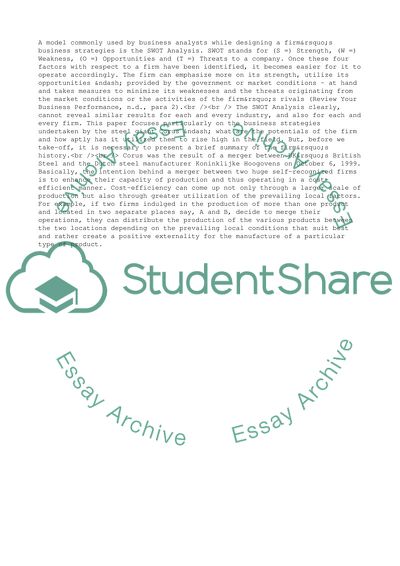Cite this document
(Analysis of Corus Business Strategy Case Study Example | Topics and Well Written Essays - 1750 words, n.d.)
Analysis of Corus Business Strategy Case Study Example | Topics and Well Written Essays - 1750 words. Retrieved from https://studentshare.org/business/1726532-strategic-business-analysiscase-study-corus
Analysis of Corus Business Strategy Case Study Example | Topics and Well Written Essays - 1750 words. Retrieved from https://studentshare.org/business/1726532-strategic-business-analysiscase-study-corus
(Analysis of Corus Business Strategy Case Study Example | Topics and Well Written Essays - 1750 Words)
Analysis of Corus Business Strategy Case Study Example | Topics and Well Written Essays - 1750 Words. https://studentshare.org/business/1726532-strategic-business-analysiscase-study-corus.
Analysis of Corus Business Strategy Case Study Example | Topics and Well Written Essays - 1750 Words. https://studentshare.org/business/1726532-strategic-business-analysiscase-study-corus.
“Analysis of Corus Business Strategy Case Study Example | Topics and Well Written Essays - 1750 Words”. https://studentshare.org/business/1726532-strategic-business-analysiscase-study-corus.


